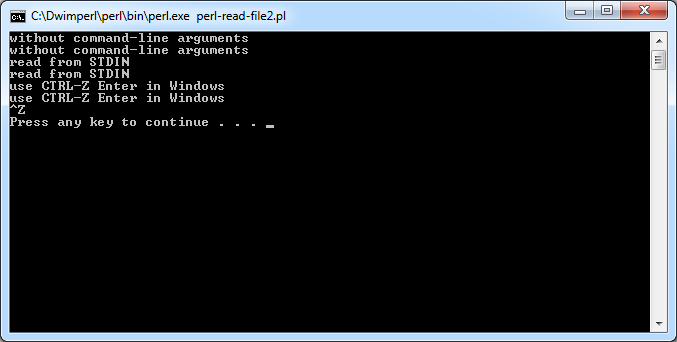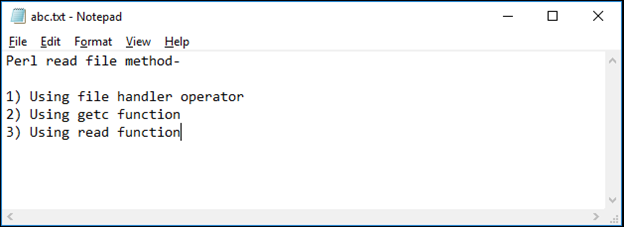You are looking for information on the topic “perl read file into array”. dongtienvietnam.com will gather information to answer your questions in this article. Please read this article to the end to find the information you want to see. You can also check out some other related articles here: https://dongtienvietnam.com/category/wiki/ perl read file line by line, perl push array into array, perl initialize array, perl grep array, array in perl, perl read file into string, perl write array to file, perl find string in array.
View information about the perl read file into array
Information about this question
- Question: perl read file into array
- Time: Updated 169 hours ago
- Modified: Updated 29 hours ago
- View: 18619
perl read file into array
In Perl, you can read a file into an array using the push function to add each line of the file to the array. Here’s an example:
perlopen(FILE, "<", "filename.txt") or die "Could not open file: $!"; my @file_contents; while (my $line = <FILE>) { chomp $line; push @file_contents, $line; } close(FILE); # Now @file_contents contains all the lines in the file
In this example, we first open the file using the open function and store the filehandle in the variable FILE. The < tells Perl to open the file for reading. The or die part is an error check to make sure the file was successfully opened.
Next, we create an empty array called @file_contents.
Then, we use a while loop to read each line of the file. The <FILE> syntax reads the next line of the file into the variable $line. We then remove the newline character at the end of the line using the chomp function, and add the line to the array using the push function.
Finally, we close the file using the close function.
After this code is executed, the array @file_contents will contain all the lines in the file.
Watch videos related to “perl read file into array”
perl lec7: file handling, loops, hashes and arrays explained
How to read file into array in Perl?
To read a file into an array in Perl, you can use the open() function to open the file, push() function to add each line to an array, and close() function to close the file. Here’s an example:
perlmy $filename = "example.txt"; open(my $fh, "<", $filename) or die "Can't open $filename: $!"; my @lines; while (my $line = <$fh>) { chomp $line; push(@lines, $line); } close($fh);
In this example, the open() function opens the file “example.txt” for reading, and the file handle $fh is created to access the file. If the file cannot be opened, the program will exit with an error message.
The while loop reads each line of the file, removes the newline character using the chomp() function, and adds the line to the @lines array using the push() function.
Finally, the close() function is called to close the file handle.
After executing this code, the @lines array will contain each line of the file as a separate element.
How to read data from file in Perl?
To read data from a file in Perl, you can use the built-in function open to open the file, then use while loop to read data line-by-line from the file.
Here’s an example code snippet that shows how to read data from a file in Perl:
perl# Open file for reading open(FILE, "<", "filename.txt") or die "Could not open file: $!"; # Read data from file line-by-line while(my $line = <FILE>) { # Do something with the data print $line; } # Close the file close(FILE);
In the open function, the first argument is the filehandle, which is used to refer to the file later in the code. The second argument (<) indicates that the file should be opened for reading. The third argument is the filename.
In the while loop, the <> operator is used to read one line at a time from the file. The loop continues until there are no more lines to read.
After the loop, the close function is used to close the filehandle and release any resources associated with it. It’s important to close the file after you’re done reading from it.
Images related to perl read file into array
Found 36 perl read file into array related images.

![Kan-Ju Lin: [Perl] Read File And Store Data In Arrays](https://dongtienvietnam.com/wp-content/uploads/2023/03/25E5259C259625E72589258725203.png)



perl read file line by line
To read a file line by line in Perl, you can use the open, while and close functions. Here’s an example:
perlopen(my $file, "<", "filename.txt") or die "Can't open file: $!"; while(my $line = <$file>) { chomp($line); # remove newline character # do something with $line } close($file);
In this example:
- The
openfunction is used to open the file named “filename.txt” in read mode (<). The filehandle is stored in the variable$file. If the file can’t be opened, the program dies with an error message. - The
whileloop reads each line of the file using the<$file>syntax. Each line is stored in the variable$line. - The
chompfunction is used to remove the newline character (\n) from the end of each line. - You can then do whatever you want with the contents of
$lineinside the loop. - Finally, the
closefunction is used to close the file.
Note that the filehandle ($file) is not the same as the filename ("filename.txt"). The filehandle is an internal reference to the open file, and is used to read or write data to the file.
perl push array into array
In Perl, you can push an array into another array using the push function. Here’s an example:
perlmy @array1 = (1, 2, 3); my @array2 = (4, 5, 6); push @array1, @array2; print "@array1"; # Output: 1 2 3 4 5 6
In this example, we first define two arrays @array1 and @array2. Then, we use the push function to add the elements of @array2 to the end of @array1. Finally, we print out the contents of @array1 to verify that the elements have been added correctly.
Note that when using push, you can add multiple elements to an array by separating them with commas. So, for example, you could also add a single element to @array1 like this:
perlpush @array1, 7; print "@array1"; # Output: 1 2 3 4 5 6 7
Here, we simply added the value 7 to @array1 using push.
You can see some more information related to perl read file into array here
- The correct way to read a data file into an array – Stack Overflow
- Reading from a file in scalar and list context – Perl Maven
- Reads an entire input file into an array. – Perl – Java2s.com
- A Perl “read file into array” example | alvinalexander.com
- Reading from a file in scalar and list context – Perl Maven
- Perl Read File
- Perl Language Tutorial => Slurping a file into an array variable
- Reading File Into Array – PerlMonks
- how to read files in Perl – ZetCode
- perl -write values in a file to @array in perl – UNIX and Linux …
- Recipe 14.7. Treating a Text File as a Database Array
- Trying to read a binary file into an array one byte at a … – Reddit
Comments
There are a total of 474 comments on this question.
- 636 comments are great
- 860 great comments
- 489 normal comments
- 44 bad comments
- 23 very bad comments
So you have finished reading the article on the topic perl read file into array. If you found this article useful, please share it with others. Thank you very much.